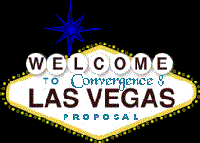

 |
 |
 |
 |
 |
 |
 |
 |

The below information is not guaranteed and is provided as a courtesy only. Please check with your local US Consulate or Embassy for the most up-to-date information.
Travelling to the US from overseas
Information gleaned from http://travel.state.gov/visa;visitors.html
Generally, a citizen of a foreign country who wishes to enter the United States must first obtain a visa, either a nonimmigrant visa for temporary stay, or an immigrant visa for permanent residence. The "visitor" visa is a nonimmigrant visa for persons desiring to enter the United States temporarily for business (B-1) or for pleasure or medical treatment (B-2). Persons planning to travel to the U.S. for a different purpose such as students, temporary workers, crewmen, journalists, etc., must apply for a different visa in the appropriate category. The consular officer can provide additional information. Travelers from certain eligible countries may also be able to visit the U.S. without a visa on the Visa Waiver Pilot Program. (See later in this document for further details.)
Travelers coming to the U.S. for tourism or business for 90 days or less from qualified countries may be eligible to visit the U.S. without a visa. Currently, 29 countries participate in the Visa Waiver Pilot Program: Andorra, Argentina, Australia, Austria, Belgium, Brunei, Denmark, Finland, France, Germany, Iceland, Ireland, Italy, Japan, Liechtenstein, Luxembourg, Monaco, the Netherlands, New Zealand, Norway, Portugal, San Marino, Singapore, Slovenia, Spain, Sweden, Switzerland, the United Kingdom and Uruguay.
When arriving at an airport, the airline will give all non-United States citizens a form to complete while still en route to the United States, either Form I-94 (white), Arrival/Departure Record, or Form I-94W (green), Nonimmigrant Visa Waiver Arrival/Departure Form. The forms ask for basic identification information and the address where you will stay in the United States.
Upon arrival, the airline personnel will show you to the inspection area. You will queue up in an inspection line and then speak with an Immigration Inspector. If you are a U.S. citizen, special lines may be available to you . If you are not a U.S. citizen, you should use the lanes marked for non-citizens.
More information on how to obtain a visa can be found at the above link.
Travelling to the US from Canada
Canadians do not generally require a visa unless coming as a Treaty Trader, classification E. Canadians are not required to obtain a passport. The majority of the time you will be waived through with little fuss, but it is always a good idea to have your passport with you if you are in possession of one.
I want to make my stop at the border/customs point as easy as possible!
Several previous guests of Convergences and similar events have experienced problems at the border with spiked 'accessories'. While certainly not one to suggest a mode of dress, I have found it easier to make such crossings in low-key gear such as t-shirts and jeans or the like. There is never any guarantee that the customs people are going to be in a good mood and let you pass unmolested (so to speak), but in my experience, they are less likely to give you any hassle if you appear as just another tourist or backpacker. YMMV.
What can I bring with me?
Visitors who are at least 21 years of age may bring the following into the USA: 200 cigarettes or 50 cigars or 2 kilograms (4.4 lbs.) of tobacco; 1 liter of alcohol; gifts to the value of $100. Different restrictions will apply to returning US residents and citizens.